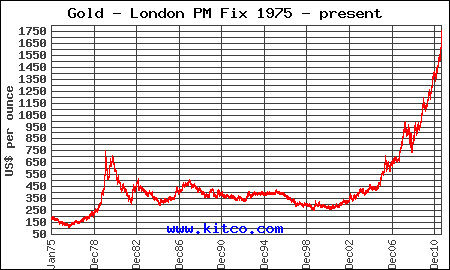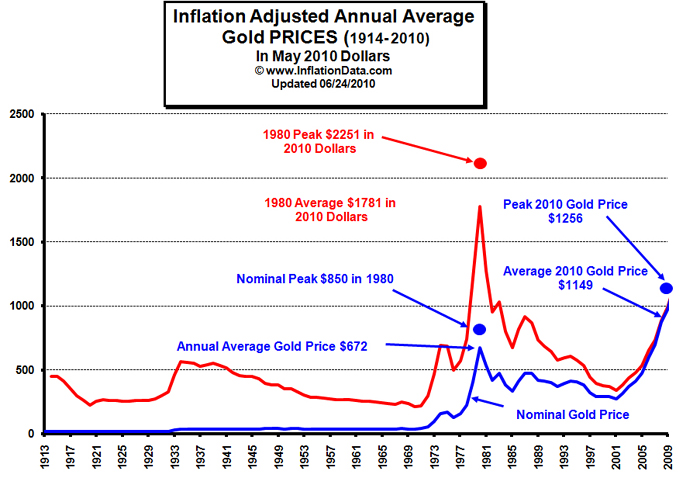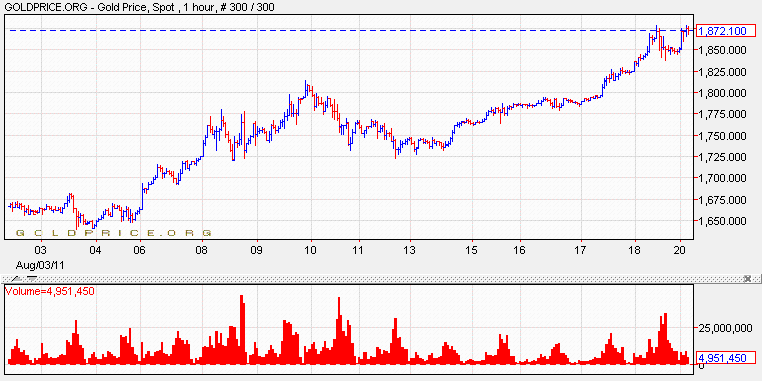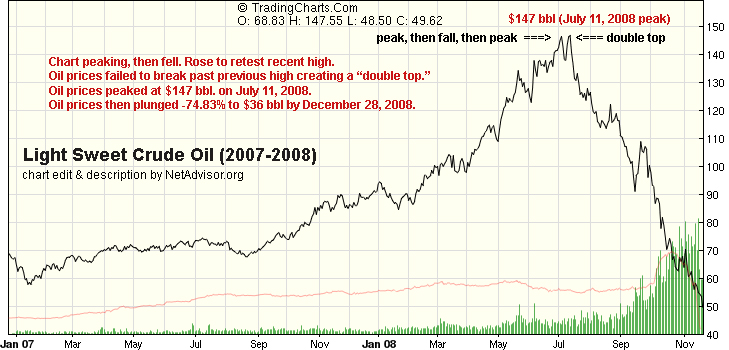08.23.2011

Market Report: Gold Hitting New High’s but How Long Will this Metal Shine in Your Portfolio?
Investor Education Series: Volume II. Issue IV.
Original article written by Net Advisor™
Gold hit a new record high in early 08-23-2011 trading to $1,910 an ounce. We continue to believe that if the CME increases margin requirements sharply higher, the gold trade could be hit harder in the short-run. However based on the recent trading on gold there is another concern: A Parabolic chart.

Gold has made an amazing climb and for good reasons:
- Global Governments’ Devaluing Their Currencies
- U.S. Racking up Debt
- U.S. Spending Out of Control
- Europe’s Sovereign Debt Crisis
- Inflation
- U.S. and Global Economies Slowing to name a few issues.
Despite all this less-than-positive news, Gold may be due to a major pull-back at anytime. The question is when? If one takes a look at the chart above, Gold hit $850 an oz. in January 1980 based on high inflation related to strong oil prices, the Soviet invasion into Afghanistan and the Iranian Revolution.
Keep in mind that in 1980 oil prices “soared” to $35 barrel. Instead of the Soviets in Afghanistan (1978-1992), the U.S. is now in Afghanistan (2002 to date), albeit for different reasons. But we predict that the outcome will be the same for the U.S. as it was for the then Soviets. And as for the Iranian Revolution, that is also ongoing with a twist.
We have seen protests and uprisings all over the Middle-East and North Africa. So over the last 33 years not much has changed except for the players in the battle, perhaps location, and the costs have escalated.

Gold’s Shine & Tarnish
Gold in the short run looks a little toppy as the chart below suggests:

Yes, the move in gold is justified based on the above (bullet point) economic and global issues over the last 9 years, and may go higher in price. Gold could hit an inflation adjusted high of $2,251 an ounce based on 06-24-2010 inflation data.
Despite gold’s run, keep in mind those who recall the .com stock-market boom (1995-2000) that trend also collapsed. There were near countless number of parabolic charts from 1999-2000.
Yahoo (NASDAQ: YHOO) hit $108.17 on or about 12-27-1999 after going parabolic (CHART). The stock has since collapsed losing about -88% since its 1999’s high.
VeriSign (NASDAQ: VRSN) hit $248.50 on or about 02-28-2000 after going parabolic (CHART). The stock has since collapsed losing about -88% since its 1999’s high.
CMGI (no longer trading) – one of the hot late 1990’s .com firms holding over 70 Internet companies went public in 1994 at $8.00 per share. By January 2000, CMGI saw its stock soar to $160 a share, then crashed during the .com Bust to under $2.00 a share by September 2001. One could perhaps picture a gradual climb of CMGI from $8 then a parabolic spike to $160, then watching the reverse happen with a plunge to under $2.00
For the record, we are not saying that Gold is going to $2.00 or will be a product of the .com Bust. What we are saying is that gold is moving in a parabolic pattern, and all – not some, but ALL parabolic chart patterns eventually crash. Let’s take a look at another recent memory with oil prices.
Oil Prices surged then collapsed during July of 2008 to December 2008.
 Original chart courtesy: TradingCharts.com Chart edit & description by NetAdvisor.org
Original chart courtesy: TradingCharts.com Chart edit & description by NetAdvisor.org


